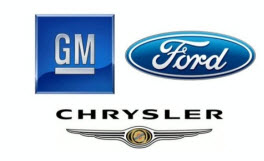With General Motors (GM) trading at approximately $1 it is more apparent that a restructuring deal is necessary and imminent. There are currently two parties involved in the negotiations with the U.S. Government / UAW Retired Workers on one side and individual / institutional investors on the other. The major discrepancy is who will have control of the company in the future and who will get paid off as a result of GM’s delinquencies.
Under the current deal set out by the Obama administration, the government would control 50% of the company, 39% would be controlled by the UAW, 10% by the bondholders and the remaining 1% for existing shareholders. Current shareholders and bondholders are not exactly ecstatic about this current deal and are working to structure another negotiation out of bankruptcy
court.[readmore]
If however this deal were to go down, the American taxpayers would be a majority stake holder in General Motors, which in the future may be more appropriately referred to as “Government Motors.” Ford (F) will more than likely have a difficult time competing against a government owned GM. With the government taking control, it is likely that they will do whatever they can in their power to revive GM no matter how much money it takes. The U.S. government has had no problem spending money now with the hopes the market will recover eventually. Paying for the trillions of dollars spent today will be a subject of interest for tax payers in the near future.
Ford, in a similar move to Capital One (COF) and many other financials, has opted to raise capital through the dilution of shares.
Just this week they sold 300 million shares of stock at a price of $4.75 per share. Originally, they had been looking for more like $6.00, but the markets did not agree that was reasonable. Ultimately, the dilution of shares reduces shareholder value and earnings per share (EPS). That is of course if there are positive earnings per share to be distributed. If EPS is negative it spreads the loss out to more shares which may make the loss look “less bad.” This is of course how we now have to compare things in a world filled with financial failure. “Less Bad” is now the new “Pretty Good.”
What is the money going to be used for? Ford has explained that they will fund retirees health care program, but seems more than likely that additional capital will be needed to stay competitive after that is exhausted as car sales have dropped off the economic cliff as the chart below illustrates.
(Click to Enlarge)
From here on in, Ford could literally be up against a giant if the government were to take control of GM. We foresee this as a major problem for them as the other two major domestic automakers (GM, Chrysler) will more than likely have a clean debt slate post bankruptcy with the addition of government backing. Demand will need to increase dramatically for domestic cars in the near future in order for Ford to stay viable all things considered.
Think about this: If the government owns a majority stake in GM, which company will get the most favorable treatment when it comes to government contracts, loans and exports?


















